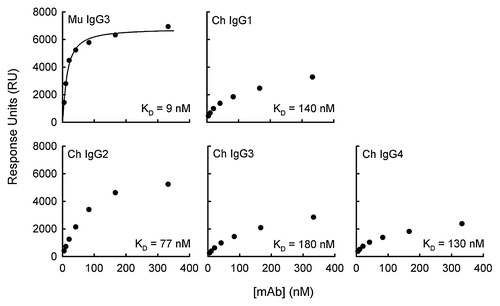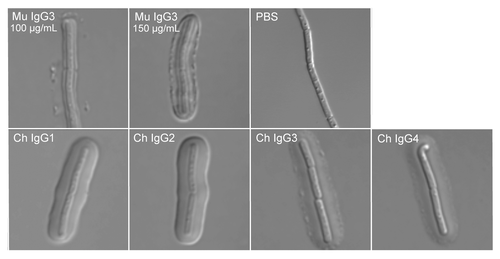Figures & data
Figure 1. Binding of anti-capsular antibodies to PGA-coated sensor surface. The total RU that was achieved following a 180 sec pulse is given as a function of antibody concentration. The KD of each antibody was determined using the steady-state equilibrium model in BIAevaluation software, where the theoretical RUmax is determined and the apparent KD is equal to the antibody concentration that is necessary to reach ½ RUmax.

Table 1. Immunochemical activities of murine and mouse–human anti-PGA F26G3 antibodies
Figure 2. Capsule reaction produced by antibody binding. Top panel: Visualization of capsular polypeptide following the addition of F26G3 MuAbs IgG3 or PBS. Addition of the F26G3 MuAb IgG3 (100–150 μg/mL) produces a rim-type reaction with deposition both proximal to the cell wall and at the capsular edge. The capsule is not visible in the absence of specific antibody (PBS). Bottom panel: Visualization of capsular polypeptide following the addition of F26G3 ChAbs IgG1–4 (100 μg/mL). The addition of F26G3 ChAbs produces a puffy-type reaction that occurs uniformly throughout the capsule.
